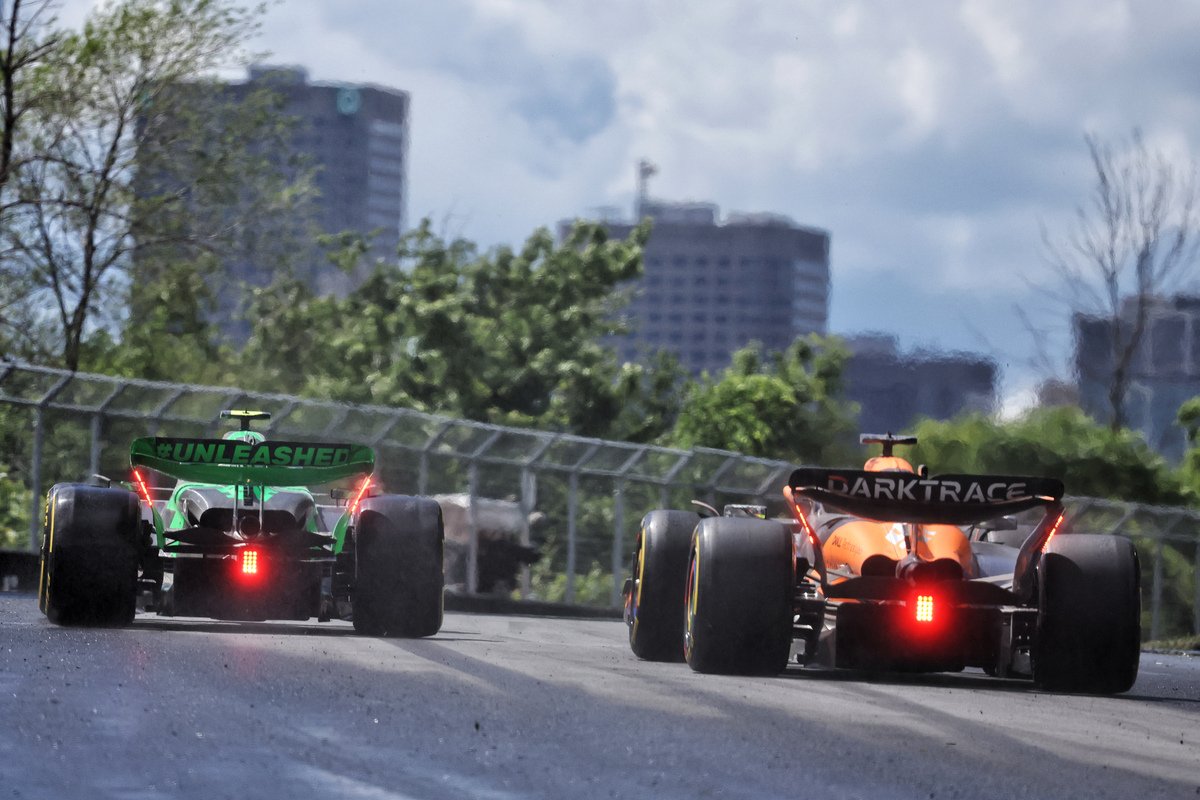

Liberty Media is the commercial rights holder of Formula 1, having acquired them from CVC Capital in early 2017 in a transaction worth $8 billion.
Since then, it has driven up the value of the sport, with estimates placing its current value well into the $20 billion range.
In Liberty Media’s 2023 annual report, it states: “Formula 1’s goal is to further broaden and increase the global scale and appeal of the FIA … Formula One World Championship … in order to improve the overall value of Formula 1 as a sport and its financial performance.”
Page 128 of the 240 page document outlines the ways in which Liberty intends to maximise the value of Formula 1’s commercial rights by increasing the value of each race slot, maximising the value of media rights, developing sponsorship revenue (including “optimizing Formula 1’s existing inventory to maximise impact, exclusivity and value for Formula 1’s partners), and enhancing corporate hospitality offerings.
However, there are two further aspects also defined as “Key factors” in improving the Formula 1’s financial performance.
“Driving growth in key strategic markets with under-monetized fan potential;
“Improving the on-track competitive balance of the World Championship and the long-term financial stability of the participating Teams.”
It’s these two points that appear to stand in contrast to its opposition to Andretti Global joining the grid for 2025.
The American team passed muster by the FIA’s measure, but Formula 1 Management refused the sign-off needed to join the grid.
That decision was announced in January and, in short, questioned the operation’s ability to compete to the requisite standard to offer any value to the world championship.
It’s a position that has attracted significant criticism with most feeling the bar for what is considered an appropriate level of competitiveness was set too high – such that half of the grid currently falls short of it.
The United States is the world’s largest economy and therefore a key market for Formula 1, one the world championship has typically struggled for penetration in. That has begun to slowly change under Liberty Media’s ownership but it remains “under-monetized”.
Television figures for this year’s Australian Grand Prix, according to Blackbook Motorsport, were down three percent on 2023 at 541,000.
By contrast, IndyCar competed in the non-championship Thermal Club event that same weekend and drew an audience of 816,000 while NASCAR at Circuit of The Americas had an audience of 3.31 million.
It should be noted, the Australian Grand Prix began at midnight in the eastern states of the United States, though Blackbook reported that “Formula One’s average viewership through the first three races of the season is down 24 per cent [year on year].”
On top of that the competitiveness of the championship has improved in recent races, with Lando Norris and Charles Leclerc having both won races since then.
Under Liberty Media, F1 has increased its footprint in the United States from a single event to three, with the United States Grand Prix complemented by the Miami Grand Prix and, as of last year, the Liberty-promoted Las Vegas Grand Prix.
That effort is in-keeping with the business’ stated ambition of driving growth in key strategic markets such as the US.
How that reconciles with the refusal of Andretti, an American team boasting arguably the best-known name in American racing coupled with an American car manufacturer (General Motors/Cadillac), is unclear.
Equally troubling is that Liberty Media’s report specifically notes its interest in “long-term financial stability of the participating Teams.”
Changes to the most recent Concorde Agreement have done much to improve the financial health of teams, with limits on their ability to spend but also a guaranteed income through a restructuring of the prize money pot.
Valuations of the 10 existing organisations have soared as a result, helped by the increased exposure the world championship enjoyed through initiatives such as the Netflix series Drive to Survive and changes to its social media stance.
Where once multiple teams were at risk of collapse, even the worst is in a strong fiscal position with a reported market value approaching $1 billion.
Yet despite that, team principals have agued against Andretti’s admission on the basis that the sport does not need another team and doing so risks the financial security of those already in it.
That’s a questionable claim and, in any case, should carry no weight in any decision to allow a new competitor onto the grid as doing so could be seen as antitrust or cartel-like behaviour from the commercial rights holder.
It is precisely why Formula 1 Management offered the existing teams no formal voice when assessing Andretti’s entry.
However, that the current teams, and Liberty Media’s interest in ensuring their financial health are specifically mentioned in the annual report is significant.
That the annual report notes the financial health of ‘participating teams’ runs the risk of it being construed as Liberty Media protecting the existing 10 teams – the refusal of Andretti offering evidence of that behaviour, which could be considered antitrust or cartel conduct.
Furthermore, it is not the role of Liberty to ensure the financial health of existing teams; it is each operation’s responsibility to develop a business model that delivers for their respective owners, all of whom will have different targets.
Liberty Media is in the business of generating a return for its shareholders, not ensuring the financial health of third parties, and it’s difficult to see how the addition of a new team has a negative impact on that.
It is exactly the concern raised in a letter sent to Liberty Media CEO Greg Maffei.
Ahead of the Miami Grand Prix, Mario Andretti was invited to Capitol Hill where he met with politicians to discuss why his son’s team was not permitted to join the championship.
The letter which quickly followed Andretti’s appearance asked three questions, the most pertinent being: “How does FOM’s denial of Andretti Global and GM, American-owned companies, square with Sherman Act requirements since the decision will benefit incumbent European racing teams and their foreign automobile manufacturing affiliates?”
The Sherman Act is intended to protect the consumer from antitrust and monopolistic business practices and works in conjunction with the Federal Trade Commission Act and the Clayton Act.
It’s worth noting, that it does not prohibit every restraint of trade, only those that are unreasonable
According to the Fair Trade Commission, “the Sherman Act is also a criminal law, and individuals and businesses that violate it may be prosecuted by the Department of Justice. Criminal prosecutions are typically limited to intentional and clear violations.”
The Sherman Act imposes criminal penalties of up to $100 million for a corporation, and $1 million for an individual, and 10 years in prison, with the FTC noting that “the maximum fine may be increased to twice the amount the conspirators gained from the illegal acts or twice the money lost by the victims of the crime, if either of those amounts is over $100 million.”
Formula 1 last year boasted total revenues of $3.222 billion in the 12 months to December 31.
The other two questions the letter asked related to the rationale in denying Andretti Global’s entry, and the input of European car makers in the decision – noting Cadillac’s interest with Andretti. A response was requested by May 3, two days after it was sent.
Less than a week later, it was followed by a letter from Jim Jordan, chairman of the Committee of the Judiciary, which was sent to Maffei and F1 boss Stefano Domenicali asking much the same thing.
The Committee of the Judiciary is one of the most influential committees in Congress and provides oversight to the Department of Justice.
One of its stated roles is to consider “legislation, resolutions, messages, petitions, memorials and other matters,” with specific mention of “Protection of trade and commerce against unlawful restraints and monopolies.”
On May 21, seven Senators wrote to the Assistant Attorney General and chair of the Federal Trade Commission raising concerns.
That letter, in part, announced that “we have serious concerns that the rejection of Team Andretti-Cadillac was based on a desire to exclude a rival from the racetrack, marketing opportunities, and prestige that competing in F1 can lend to a car manufacturer competing to sell cars across the globe.”
It also notes the input of “key stakeholders” in the rejection of Andretti’s bid and suggests that they “may have engaged in concerted action to exclude Team Andretti-Cadillac.”
Throughout, Formula 1 Management has stood firmly behind its January statement, which outlined its opinion that the addition of Andretti did not add commercial value to the world championship.
“Our assessment process has established that the presence of an 11th team would not, in and of itself, provide value to the Championship,” it outlined.
“Any 11th team should show that its participation and involvement would bring a benefit to the Championship.
“The most significant way in which a new entrant would bring value is by being competitive, in particular by competing for podiums and race wins.
“This would materially increase fan engagement and would also increase the value of the Championship in the eyes of key stakeholders and sources of revenue such as broadcasters and race promoters.”
That is a position consistent with Liberty Media’s definition of its ownership of Formula 1.
How that all stacks up in the eyes of the law in the United States is unknown, it’s never been tested, though recent developments suggest that may change.




















Discussion about this post